| Image | Plant | Status | Notes | Events |
|---|---|---|---|---|
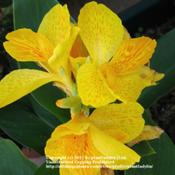 |
Cannas (Canna) |
Have |
Let the frost visibly blacken Canna foliage before you dig – usually in mid-to-late fall. The trick is to get them out of the ground before temperatures substantially drop and the ground freezes. Waiting also allows you to get the most from your Cannas – they will continue to grow and produce flowers often late into the autumn, adding much to the fall garden. | November 15, 2022: Winterized (How Do I Dig Cannas For Overwintering? Use a digging fork to gently lever the clump out of the ground. As Cannas are shallowly rooted, this will be easier than you think! If you are storing Cannas grown in containers, you can either store the roots, container and all, or remove the clump from the container and proceed in the same way as with garden-grown Cannas, depending upon your storage space. Container-grown Cannas will need to be replanted in fresh soil next season for best results. Separate the rhizomes with your hands. Be gentle, but do not worry if they break. The fleshy roots will dry up during storage, so again, handle carefully, but don't worry too much about breakage. If they have been in garden soil, do not wash the rhizomes, as doing so invites disease problems during storage. Instead, remove the soil and lightly brush them off. However, if they were located in a boggy condition or in a water feature (Cannas make great pond plants!), cleaning off the muck and detritus from a long season is advised. Cut off the old foliage stalks 1-2 inches above the rhizome with a clean knife. Then, carefully inspect the rhizomes for rot or animal damage and discard those with signs of disease. If it's a large rhizome, you can use a clean knife to cut off rotten or damaged areas to clean, white flesh. Remember, different cultivars of Canna look the same naked. If you're digging several types at the same time, put them into large, labelled trugs (even if it's just a scrap piece of paper thrown in with them). Before you store them later, you can do a better job of labeling. How Do I Store Cannas For Overwintering? Now comes the easiest part of all – preparing them for storage. Traditional methods advocate placing them in containers or bags filled with slightly dampened peat moss or wood shavings, but for those short on time or either of those materials, Cannas can also be overwintered simply by placing the sorted rhizomes into heavy-duty garbage bags and storing in the correct conditions (see below). The garbage bags will help maintain a good level of humidity without adding extra moisture. However you decide to store them, make sure to label bags or pots of rhizomes carefully with tags. You can also use a Sharpie to write directly on the rhizome itself. You'll thank yourself when spring comes and those rhizomes start sprouting. Where Do I Store Cannas For Overwintering? Find a cool, dark space that stays above freezing but below 55 throughout the winter. Non-fluctuating temperatures are best as they prevent early sprouting. Some great storage places to consider are: Cellars Crawlspaces Unfinished basements Unheated garages Deep cold frames Avoid Outbuildings, barns, potting sheds, etc., as they often tend to fall below freezing in the deep winter. Directly after storing the rhizomes, and particularly during a warmer autumn, you may see a certain amount of early re-sprouting. It's safe to ignore this but means your temperatures need to be a bit cooler. If plants are continuing to re-sprout adjust the temperatures or store somewhere cooler, as this will eventually exhaust the rhizome's resources. When Can I Replant Cannas In The Garden? As temperatures increase and spring returns, re-inspect your rhizomes – throw away any that are rotten or diseased, and if some are beginning to sprout in storage, lightly dampen with water to replenish resources. Cannas are tropical warm-season plants. They will not only be harmed by planting them in the garden too early, but they will not grow vigorously until temperatures are warmer. At this point you have two choices: Either wait for the right time in the garden to plant, or force them into earlier strong growth using a cold frame or greenhouse. Whichever route you take, plant the rhizomes 3-4 inches deep in rich soil approximately 1' apart with a small amount of balanced fertilizer. Lay the rhizome horizontally in the soil with any bud swellings (eyes) or new shoots pointing up. Water well. Natural Timing For Canna Rhizomes Keep your storage areas cool, and when all danger of frost has past, re-plant outside or in containers in rich soil with a small amount of balanced fertilizer. Foliage will take a while to re-sprout, but will be ready for your summer garden. If you are planting in a water feature, make sure to cover the soil of the container with at least 2 inches of pea gravel to keep soil firmly in the pot. Forced Timing For Canna Rhizomes Approximately 4-5 weeks before the last frost, replant the rhizomes in small temporary containers (perhaps 2 per gallon pot), with fresh soil and a small amount of balanced fertilizer. Keep them protected in cold frames or an unheated greenhouse with plenty of light. As temperatures naturally warm outside, you will begin to see sprouting above the soil line. Keep them well watered and do not forget to check daytime temperatures in your cold frame or greenhouse. Temperatures can rise quickly and damage the emerging foliage. When all danger of frost is past, replant the Cannas in containers or garden beds at the same soil level they were in the pots. They should be well-leafed out and ready for the season ahead!) |
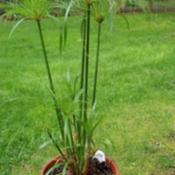 |
Papyrus (Cyperus papyrus Graceful Grasses® Prince Tut™) |
Have |
Purchased from Devon Greenhouses | November 1, 2022: Winterized (Be sure to bring your papyrus plant indoors where it will be warm and snug before temperatures in your area fall below 40 degrees F. (4 C.). Overwintering papyrus plants is easy if you can provide sufficient warmth, light, and moisture. Here's how: Move the plant into a container with a drainage hole in the bottom. Place the container inside a larger, water-filled pot with no drainage hole. A child's wading pool or a galvanized metal container works well if you have several papyrus plants. Be sure to keep at least a couple of inches (5 cm.) of water in the container at all times. You can also plant papyrus in a regular container filled with potting soil, but you'll need to water frequently to prevent the soil from drying out. Place the plant in bright sunlight. A south-facing window may provide sufficient light, but you may need to place the plant under a grow light. Papyrus is most likely to survive the winter if room temperatures are maintained between 60 and 65 degrees F. (16-18 C.). The plant may go dormant during the winter, but it will resume normal growth when the weather warms in spring. Withhold fertilizer during the winter months. Return to a regular feeding schedule after you move the plant outdoors in spring. ) |
 |
Dwarf Papyrus (Cyperus prolifer 'Little Prince') |
Have |
||
 |
Variegated Winter Daphne (Daphne odora Marianni™) |
Have |
||
 |
Coneflower (Echinacea Double Scoop™ Mandarin) |
Have |
Purchased two plants $4 each at Inline Propagator's Plant Sale. A new series of Coneflower bred to produce well-branched, sturdy and compact plants with excellent hardiness. This selection produces large, double flowers with a mandarin orange centre cushion and flared, ray petals. Ideal for sunny borders and growing in mixed containers. Attractive to butterflies. Excellent for cutting. Coneflowers begin blooming midsummer and continue for months if faded flowers are regularly removed. However keeping some dried flower heads on the plants in fall will provide food for wintering song birds. Dried seed heads also add interest to the winter garden. | September 24, 2022: Obtained plant ($4 each. Purchased two plants.) |
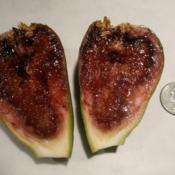 |
Edible Fig (Ficus carica 'Stella') |
Have |
Purchased from Devan Greenhouse on June 2 2022 for $20 | June 2, 2022: Obtained plant |
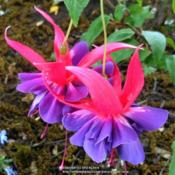 |
Fuchsia 'Army Nurse' |
Have |
April 25, 2008: Obtained plant (Ordered from the US-Monniers Country Gardens Woodburn Oregon. This has been hardy for for 12 winters.) | |
 |
Fuchsia 'Delta's Sara' |
Have |
April 19, 2021: Obtained plant ($5 Country Gardens. Bought One for Rita as BD Gift.) | |
 |
Fuchsia 'Dollar Princess' |
Have |
April 19, 2021: Obtained plant (Country Gardens) | |
 |
Hardy Fuchsia (Fuchsia 'Santa Claus') |
Have |
April 19, 2021: Obtained plant ($5 Country Gardens) | |
 |
Fuchsia 'Sir Matt Busby' |
Have |
April 19, 2021: Obtained plant (Country Gardens) | |
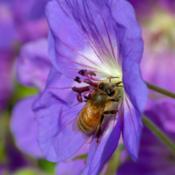 |
Geranium Rozanne® |
Have |
Purchased Sept. 23 2022 from Inline Propagator's Plant Sale. 2nd Plant. Easily grown in average, medium moisture, well-drained soils in full sun to part shade. Prefers moist, organic soils. Established plants have some drought tolerance. Plants prefer some part afternoon shade in the St. Louis area. In hot summer climates, the primary bloom runs from late spring to early summer (June - July) with a lighter bloom continuing throughout summer into fall. If bloom interrupts in the heat of the summer, plants can be cut back to rejuvenate, shape and/or encourage a late summer/early fall rebloom. In cooler northern climates, plants usually bloom well throughout summer into fall. Side stems may be removed or trimmed at any time to control spread. ROZANNE has exceptional heat tolerance, and generally will bloom throughout the summer. |
September 24, 2022: Obtained plant ($5) |
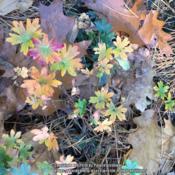 |
Hardy Geranium (Geranium sanguineum 'Max Frei') |
Have |
April 24, 2021: Obtained plant (Cedar Rim $5) | |
 |
False Sunflower (Heliopsis helianthoides var. scabra Summer Sun) |
Have |
April 19, 2021: Obtained plant (Country Gardens) | |
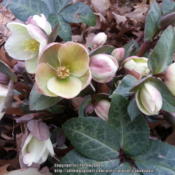 |
Hellebore (Helleborus Frostkiss™ Winter Moonbeam) |
Have |
Purchased from Inline Propagators Plant Sale $7 Planted in front of livingroom window Hosta Garden. Helleborus × ericsmithii 'Winter Moonbeam' An evergreen perennial forming a low mound to 35cm, its dark green leaves marked with silver-grey veins. From late winter into early spring, single, white, outward-facing flowers are borne on short stems; flowers age to pink and then a red colour Hybrid Christmas Rose USDA Zone: 5-9 Plant number: 1.256.900 An absolutely wonderful introduction from Harvey's Garden Plants in Britain, this sturdy hybrid is gorgeous both in leaf and in flower. It forms a low mound of leathery evergreen leaves, intricately veined in silvery-grey. Large outfacing single white flowers appear in early spring, gradually ageing to pink then near-red. Avoid doing any pruning other than to remove dead leaves or stems down near the base of the plant. Quite possibly hardy to Zone 5 or colder. Clumps may be carefully divided after flowering in late spring every few years, if desired. USPP#21062: unlicensed propagation prohibited. CAUTION: Harmful if eaten/Skin irritant. |
September 24, 2022: Obtained plant ($7) |
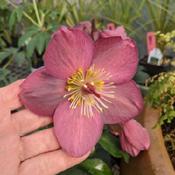 |
Hellebore (Helleborus Gold Collection® Ice N' Roses Rose) |
Have Trade as plant |
Gift from Peter and Janey Feb 2023 | |
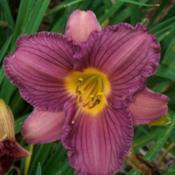 |
Daylily (Hemerocallis 'Purple De Oro') |
Have |
||
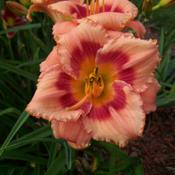 |
Daylily (Hemerocallis 'Strawberry Candy') |
Have |
||
| Rose of Sharon (Hibiscus syriacus 'Megapetal Red Heart') |
Have |
Planted 2021 under front oak tree. Tag says grows 8-10' tall and 6' wide. Cold hardy to -29C | ||
 |
Panicle Hydrangea (Hydrangea paniculata Little Quick Fire®) |
Have |
Purchased Sept 24 2022 from Inland Propagators $10 Little Quick Fire panicle hydrangea combines two fantastic, useful traits: it's the earliest panicle hydrangea to bloom each summer, and it's a dwarf, compact selection, reaching just 3-5' tall and wide. It's the ideal space-saving season extender for your landscape or garden! Its lacecap blooms begin to open in early summer - typically 4th of July for us here in West Michigan - and soon change to a red color that persists until frost. Its flowers have a light honey fragrance and attract pollinators too, which help to make it a real hub of activity and beauty in your yard. What makes Little Quick Fire different from other panicle hydrangeas? - One of the earliest to bloom in summer - typically by 4th of July - Dwarf habit and compact size make it very versatile in the landscape or garden Details: Name: Hydrangea paniculata 'SMNHPLQF' pp#25,136, cbr#5406 Hardiness: USDA zones 3-8 Height + width: 3-5' Light: Full to part sun Soil: Any well-drained soil will do. Though dry conditions are unlikely to harm an established plant, prolonged drought will cause flowers to brown and wilt instead of develop a good pink color. Pruning: Blooms on new wood; prune back by one-third in late winter/early spring for better habit and a slight improvement in stem strength. Water: Average water needs. Does not tolerate wet conditions. Fertilizer: Fertilize once in early spring with a rose fertilizer if desired. Bloom time: Early summer Bloom color: White, aging to red. That color persists through frost. Uses: Little Quick Fire hydrangea is small enough to grow in containers, mix into perennial gardens and flower beds, as well as incorporate into landscaping as a hedge, specimen, mass planting, etc. |
September 24, 2022: Obtained plant ($10) |